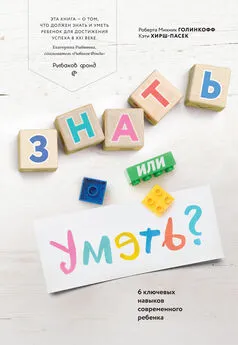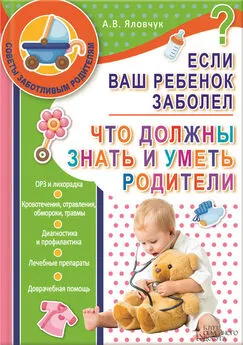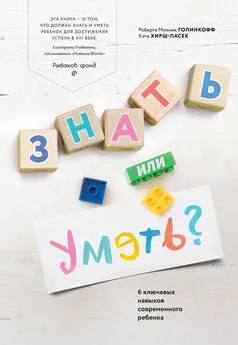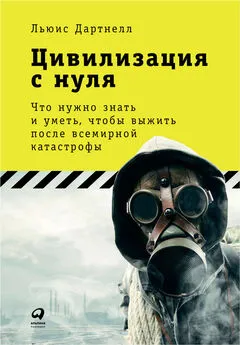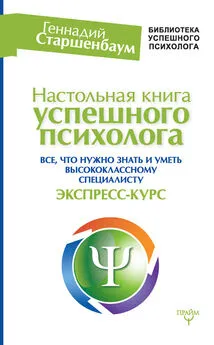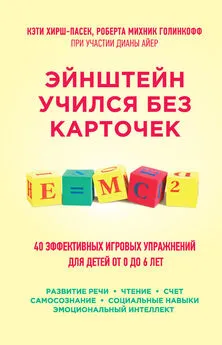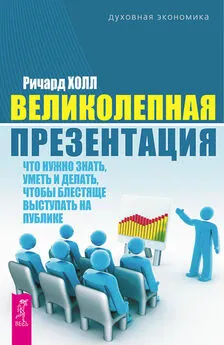Роберта Голинкофф - Знать или уметь?
- Название:Знать или уметь?
- Автор:
- Жанр:
- Издательство:Манн, Иванов и Фербер
- Год:2018
- Город:Москва
- ISBN:978-5-00100-981-8
- Рейтинг:
- Избранное:Добавить в избранное
-
Отзывы:
-
Ваша оценка:
Роберта Голинкофф - Знать или уметь? краткое содержание
Знать или уметь? - читать онлайн бесплатно ознакомительный отрывок
Интервал:
Закладка:
302
Moses, L.J., Baldwin, D.A. (2005). What can the study of cognitive development reveal about children’s ability to appreciate and cope with advertising? Journal of Public Policy & Marketing, 24, 186–201. dx.doi.org/10.1509/jppm.2005.24.2.186.
303
Kuhn, D., Weinstock, M. (2002). What is epistemological thinking and why does it matter? In B. Hofer & P. Pintrich (Eds.), Epistemology: The psychology of beliefs about knowledge and knowing (сс. 121–140). Mahwah, NJ: Erlbaum.
304
Flavell, J.H., Mumme, D.L., Green, F.L., Flavell, E.R. (1992). Young children’s understanding of different types of beliefs. Child Development, 63, 960–977. dx.doi.org/10.2307/1131247.
305
Kuhn, D., Cheney, R., Weinstock, M. (2000). The development of epistemological understanding. Cognitive Development, 15, 309–328. dx.doi.org/10.1016/S0885–2014(00)00030–7.
306
Stack, L. (26 июня 2013). “That’s not my job”: The lamest excuse in business today. См. здесь: theproductivitypro.com/blog/2013/06/thats-not-my-job-the-lamest-excuse-in-business-today/.
307
Речь о нашумевшем банкротстве Enron (2001) после того, как руководству были предъявлены обвинения в фальсификации отчетности, а также использовании различных незаконных финансовых схем.
308
Kuhn, D. (1999). A developmental model of critical thinking. Educational Researcher, 28(2), 16–46. dx.doi.org/10.3102/0013189X028002016.
309
Parish-Morris, J., Hennon, E.A., Hirsh-Pasek, K., Golinkoff, R.M., Tager-Flusberg, H. (2007). Children with autism illuminate the role of social intention in word learning. Child Development, 78, 1265–1287. dx.doi.org/10.1111/j.1467–8624.2007.01065.x.
310
Мы благодарим одного из своих анонимных рецензентов за этот превосходный пример.
311
Price, M. (ноябрь 2007). The joke’s in you. Monitor on Psychology, 38(10), 18. См. здесь: www.apa.org/monitor/nov07/thejoke.aspx, абзац 13.
312
Price, M. (ноябрь 2007). The joke’s in you. Monitor on Psychology, 38(10), 18. См. здесь: www.apa.org/monitor/nov07/thejoke.aspx.
313
Kuhn, D. (1999). A developmental model of critical thinking. Educational Researcher, 28(2), 16–46. dx.doi.org/10.3102/0013189X028002016.
314
Rodriguez, T. (12 июня 2014). Rethink your thoughts about thinking. Scientific American, 25. См. здесь: www.scientificamerican.com/article/rethink-your-thoughts-about-thinking.
315
Baldoni, J. (20 января 2010). How leaders should think critically. Harvard Business Review. См. здесь: blogs.hbr.org/2010/01/how-leaders-should-think-criti/, абзац 2.
316
Pallardy, R. (2015). Deepwater Horizon oil spill of 2010. См. здесь: www.britannica.com/event/Deepwater-Horizon-oil-spill-of-2010.
317
Gabler, N. (13 августа 2011). The elusive big idea. The New York Times. См. здесь: www.nytimes.com/2011/08/14/opinion/sunday/the-elusive-big-idea.html?pagewanted=all, абзац 5.
318
Khalifa, M. (май 2007). International marketing mistakes related to culture. См. здесь: www.slideshare.net/levi22usa/international-marketing-mistakes-related-to-culture.
319
Kuhn, D. (1999). A developmental model of critical thinking. Educational Researcher, 28(2), 16–46. dx.doi.org/10.3102/0013189X028002016.
320
Halpern, D.F. (1998). Teaching critical thinking for transfer across domains: Dispositions, skills, structure training, and metacognitive monitoring. American Psychologist, 53, 449–455. dx.doi.org/10.1037/0003–066X.53.4.449, с. 450.
321
Piaget, J. (1952). The origins of intelligence in children (M. Cook, Trans.). Madison, CT: International Universities Press.
322
Mills, C.M. (2013). Knowing when to doubt: Developing a critical stance when learning from others. Developmental Psychology, 49, 404–418. dx.doi.org/10.1037/a0029500.
323
Ma, L., & Ganea, P.A. (2009). Dealing with conflicting information: Young children’s reliance on what they see versus what they told. Developmental Science, 13, 151–160. dx.doi.org/10.1111/j.1467–7687.2009.00878.x.
324
Mills, C.M. (2013). Knowing when to doubt: Developing a critical stance when learning from others. Developmental Psychology, 49, 404–418. dx.doi.org/10.1037/a0029500.
325
Mills, C.M. (2013). Knowing when to doubt: Developing a critical stance when learning from others. Developmental Psychology, 49, 40–418. dx.doi.org/10.1037/a0029500, с. 413.
326
Brooks, X. (2 июня 2013). Michael Douglas on Liberace, Cannes, cancer and cunnilingus. The Guardian. См. здесь: www.theguardian.com/film/2013/jun/02/michael-douglas-liberace-cancer-cunnilingus.
327
Centers for Disease Control and Prevention. (2015). Vaccines do not cause autism. См. здесь: www.cdc.gov/vaccinesafety/concerns/autism/, абзац 7.
328
Allday, R. (7 марта 2015). Failure to vaccinate led to California’s measles outbreak. San Francisco Chronicle. См. здесь: www.sfchronicle.com/bayarea/article/Failure-to-vaccinate-fueled-state-s-measles-6121401.php, абзац 9.
329
Kuhn, D., Weinstock, M. (2002). What is epistemological thinking and why does it matter? In B. Hofer & P. Pintrich (Eds.), Epistemology: The psychology of beliefs about knowledge and knowing (сс. 121–140). Mahwah, NJ: Erlbaum.
330
Kuhn, D. (2009). The importance of learning about knowing: Creating a foundation for development of intellectual values. Child Development Perspectives, 3, 112–117. dx.doi.org/10.1111/j.1750–8606.2009.00089.x.
331
Curtis, L. (2015). Ten takeaway tips for teaching critical thinking. Взято с сайта Killeen Independent School District: www.killeenisd.org/teachers/index.cfm?param1=13542.
332
Mills, C.M. (2013). Knowing when to doubt: Developing a critical stance when learning from others. Developmental Psychology, 49, 404–418. dx.doi.org/10.1037/a0029500.
333
Wilson, E.O. (1999). Consilience: The unity of knowledge (Vol. 31). New York, NY: Random House, с. 294.
334
Pellegrino, J.W., & Hilton, M.L. (Eds.). (2013). Education for life and work: Developing transferable knowledge and skills in the 21st century. Washington, DC: National Academies Press.
335
Пять типов умов по Гарднеру: дисциплинарный, синтезирующий, креативный, респектологический и этический. По изданию на русском языке: Гарднер Г. Мышление будущего. Пять видов интеллекта, ведущих к успеху в жизни. М.: Альпина Паблишер, 2015.
336
Gardner, H. (2006). Five minds for the future. Boston, MA: Harvard Business School Press, с. 46.
337
Tough, P. (2012). How children succeed. New York, NY: Houghton Mifflin, Harcourt.
338
Gilbert, D.T. (1991). How mental systems believe. American Psychologist, 46, 107–119. dx.doi.org/10.1037/0003–066X.46.2.107, с. 111.
339
Darling-Hammond, L. (Ed.). (2008). Powerful learning. San Francisco, CA: Wiley.
340
de Icaza, M.A. (6 ноября 1991). U.S. Students memorize, but don’t understand [Letter to the editor]. The New York Times. См. здесь: www.nytimes.com/1991/11/06/opinion/l-us-students-memorize-but-don-t-understand-740191.html, абзацы 2, 3.
341
de Icaza, M.A. (6 ноября 1991). U.S. Students memorize, but don’t understand [Letter to the editor]. The New York Times. См. здесь: www.nytimes.com/1991/11/06/opinion/l-us-students-memorize-but-don-t-understand-740191.html, абзац 5.
342
На этот пример нас натолкнула следующая работа: Paul, R., & Elder, L. (2012). Critical thinking handbook: K–3rd grades. Tomales, CA: Foundation for Critical Thinking Press.
343
Kuhn, D., & Weinstock, M. (2002). What is epistemological thinking and why does it matter? In B. Hofer & P. Pintrich (Eds.), Epistemology: The psychology of beliefs about knowledge and knowing (сс. 121–140). Mahwah, NJ: Erlbaum, с. 139.
344
Halpern, D.F. (1998). Teaching critical thinking for transfer across domains: Dispositions, skills, structure training, and metacognitive monitoring. American Psychologist, 53, 449–455. dx.doi.org/10.1037/0003-066X.53.4.449.
345
Sternberg, R.J., & Grigorenko, E.L. (2007). Teaching for successful intelligence: To increase student learning and achievement. Newbury Park, CA: Corwin Press.
346
Edersheim, E. H. (2007). The definitive Drucker. New York, NY: McGraw-Hill.
347
Kantor, J., & Streitfeld, D. (15 августа 2015). Amazon’s bruising, thrilling workplace. The New York Times. См. здесь: www.nytimes.com/2015/08/16/technology/inside-amazon-wrestling-big-ideas-in-a-bruising-workplace.html, абзац 29.
348
Gardner, H. (2006). Five minds for the future. Boston, MA: Harvard Business School Press, с. 77.
349
Bronson, P., & Merryman, A. (10 июля 2010). The creativity crisis. Newsweek. См. здесь: www.newsweek.com/creativity-crisis-74665.
350
Torrance Creative Thinking — Тест Торренса на творческое мышление (разработан психологом Эллисом Торренсом). Первоначально включал простые задания на мышление и навыки решения проблем, оцениваемые по четырем линиям: беглость, гибкость, оригинальность и разработка. Позднее был исправлен и дополнен.
351
Kim, K.H. (2011). The creativity crisis: The decrease in creative thinking scores on the Torrance Tests of Creative Thinking. Creativity Research Journal, 23, 285–295. dx.doi.org/10.1080/10400419.2011.627805.
352
Guilford, J.P. (1967). The nature of human intelligence. New York, NY: McGraw-Hill, с. 213.
353
Робинсон К. Образование против таланта.М.: Манн, Иванов и Фербер, 2012.
Читать дальшеИнтервал:
Закладка:
